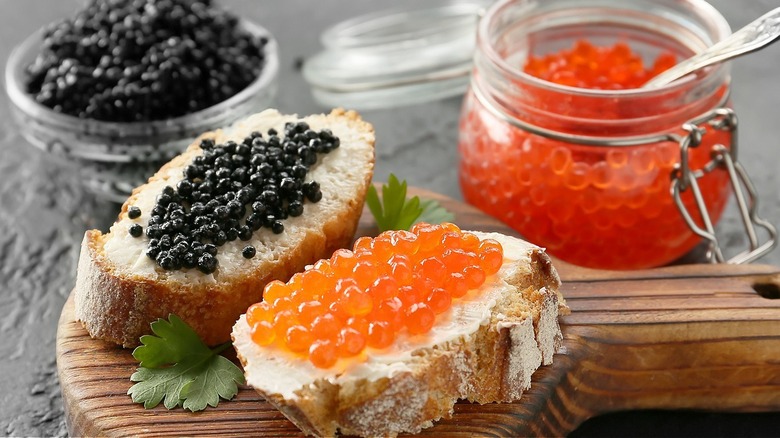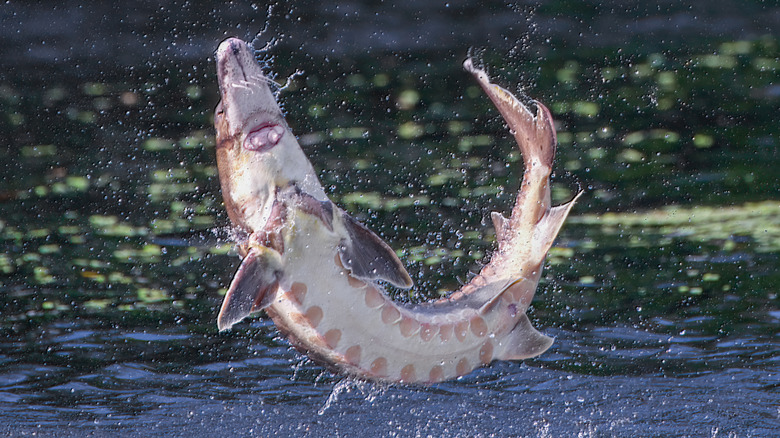Why Bars Used To Give Away Free Caviar
Caviar is one of those foods that has become inextricably linked to high society and lavish tastes, the Rolls-Royce of fine dining. Now regarded as an expensive delicacy the world over, some varieties of caviar, such as beluga, can cost up to a cartoonishly eye-popping $3,500 per pound.
Although it sounds super fancy, caviar is simply salted fish roe or fish eggs. However, the real McCoy comes from sturgeon, a large prehistoric-looking fish that — stop me if you've heard this one before — has been driven close to extinction due to overfishing, pollution, and general degradation of its habitat. Part of the reason for caviar's lofty retail value is that sturgeon are extremely rare. In fact, the International Union for Conservation of Nature has labeled the fish as the most critically endangered group of species on Earth. Before the days of overharvesting and the environmental destruction caused by the Industrial Revolution, sturgeon were actually plentiful in American rivers.
It seems absurd, in retrospect, that while today's complimentary bar snacks mostly consist of peanuts or pretzels, caviar used to be served gratis in bars.
Care for some caviar with your beer?
During the early 19th century, when wild sturgeon numbers were flourishing, caviar was often given away with lunch at American bars. When it came to distributing free caviar to tavern patrons, the core concept was the same as that of leaving out a complimentary dish of nuts or chips. Its salty taste would make you thirsty, encouraging more drinking, which would ideally result in higher alcohol sales for the establishment.
Before long, a thriving industry developed around caviar and America became the largest caviar exporter in the world. This, in turn, led to overfishing, which coupled with pollution and river damming, caused a precipitous decline in native sturgeon populations, bringing them to the brink of extinction. With sturgeon populations in jeopardy and supply waning, caviar gradually became more of a precious commodity and prices rose considerably over the years. Today most caviar is harvested from farm-raised sturgeon.
As a result, gone are those halcyon days of pairing free caviar with a lager or ale. Pass the peanuts and raise your glass to the beleaguered sturgeon.

